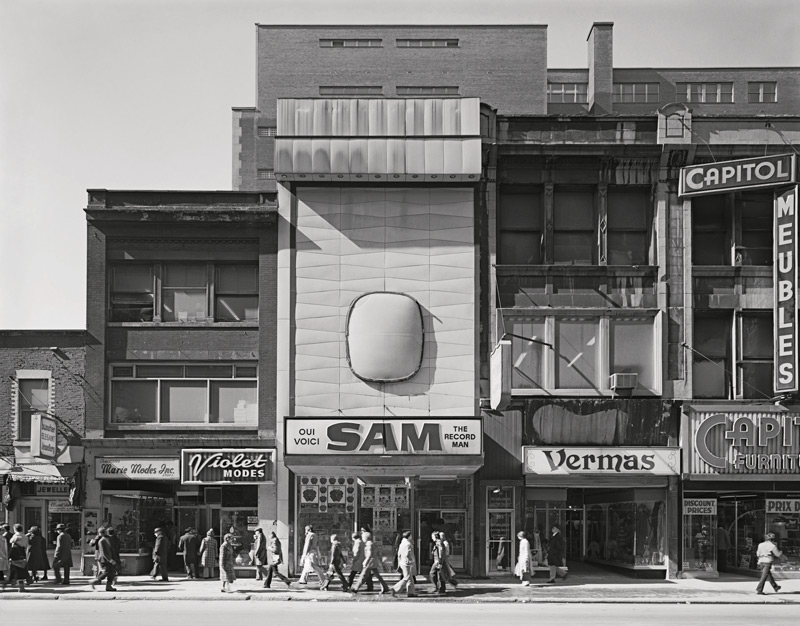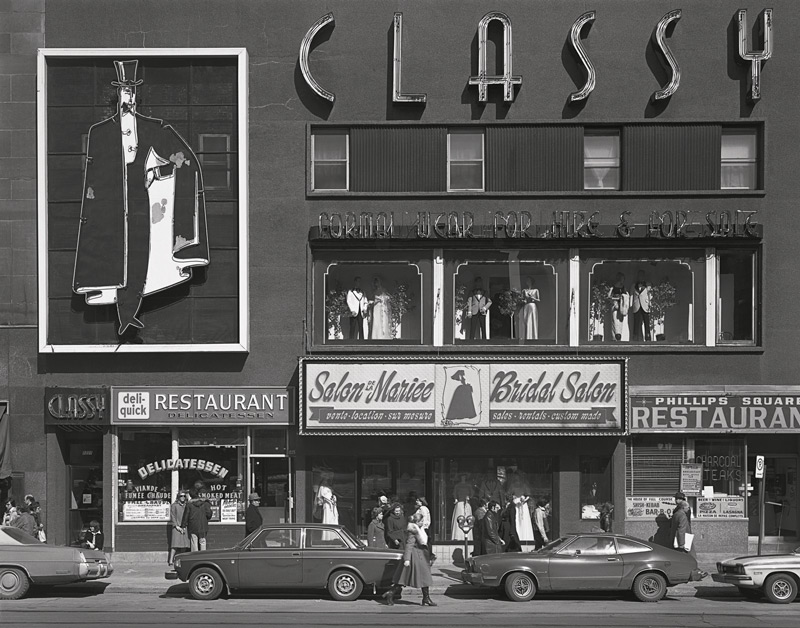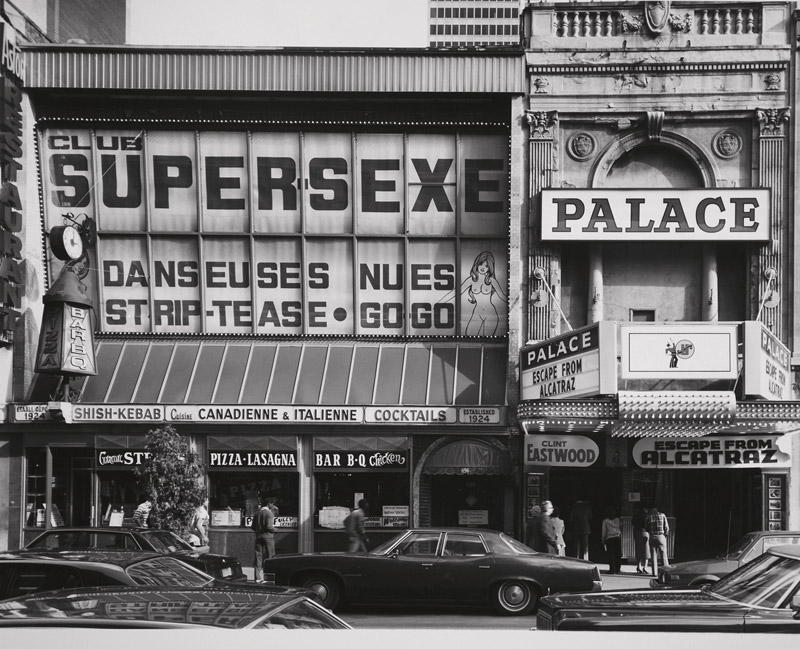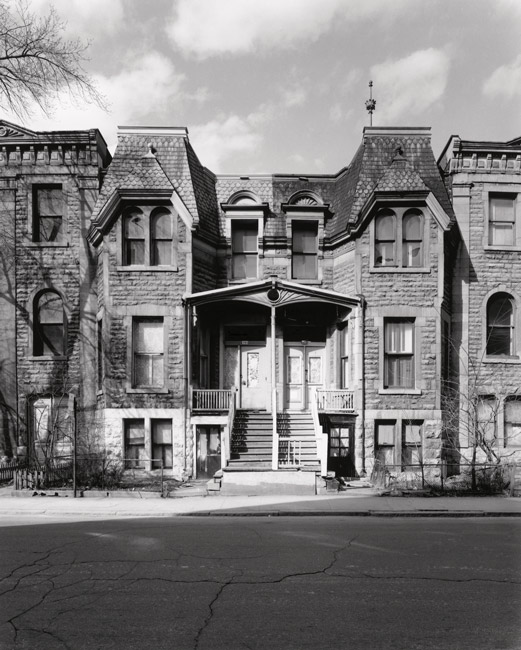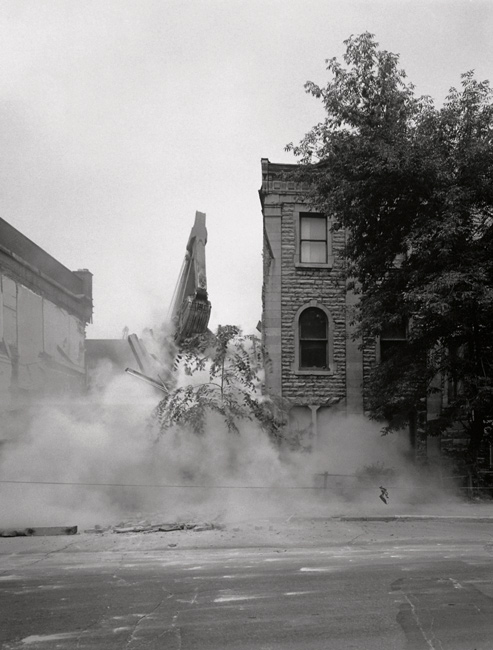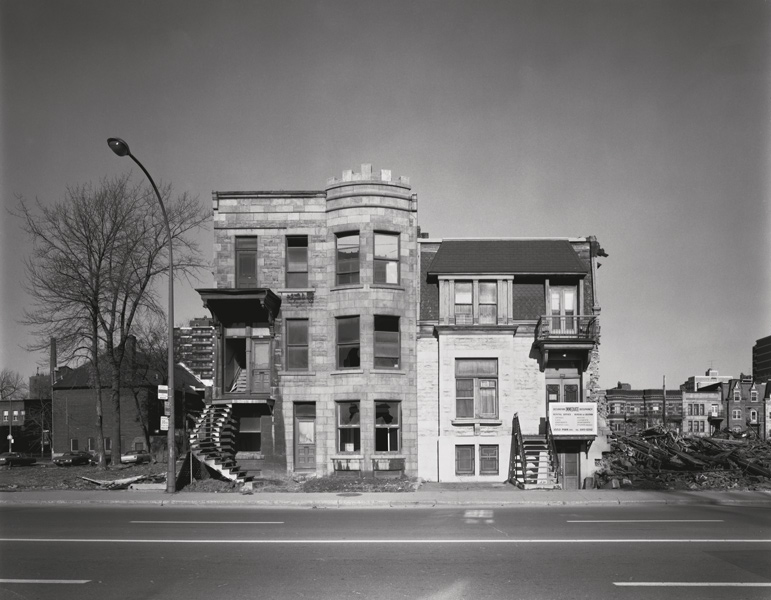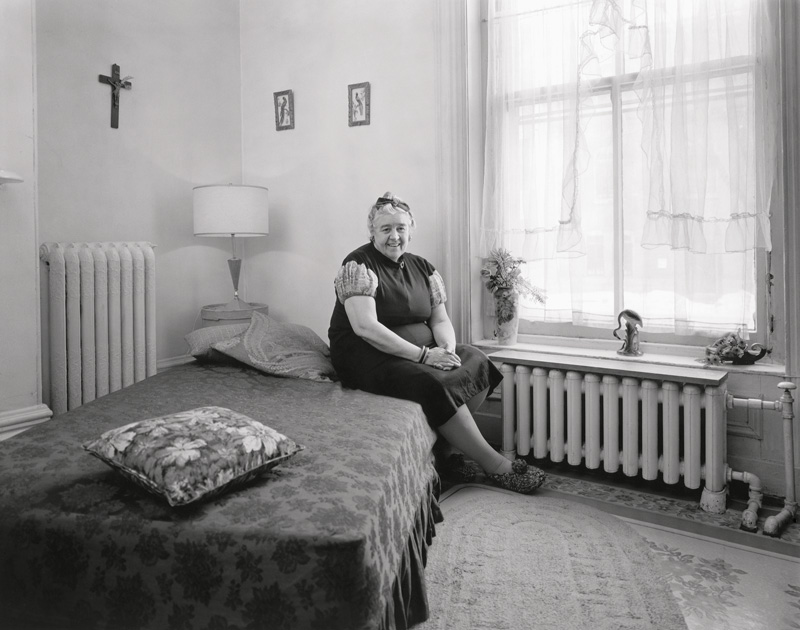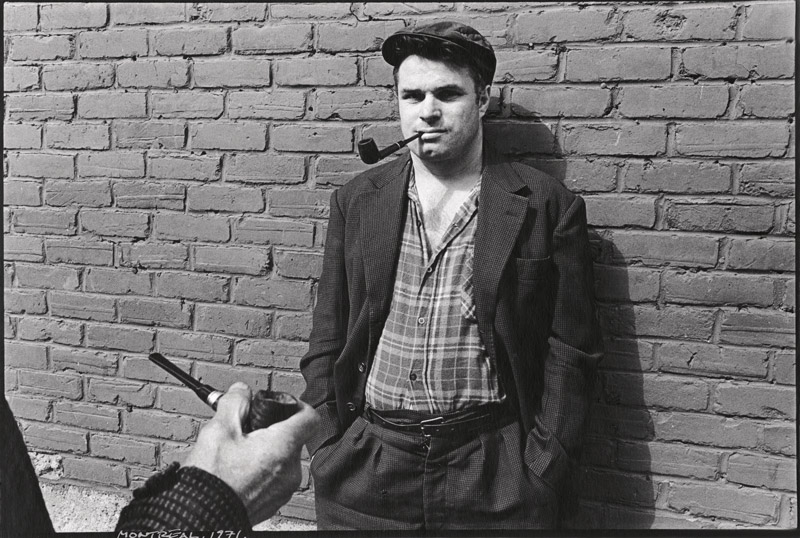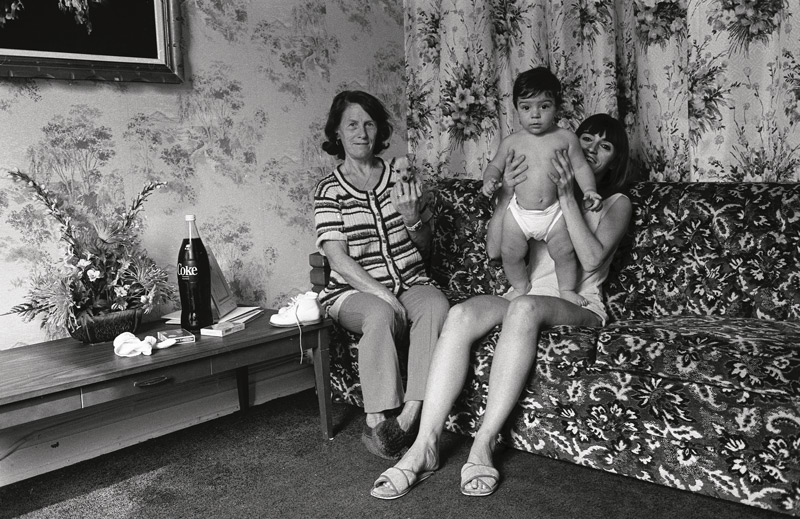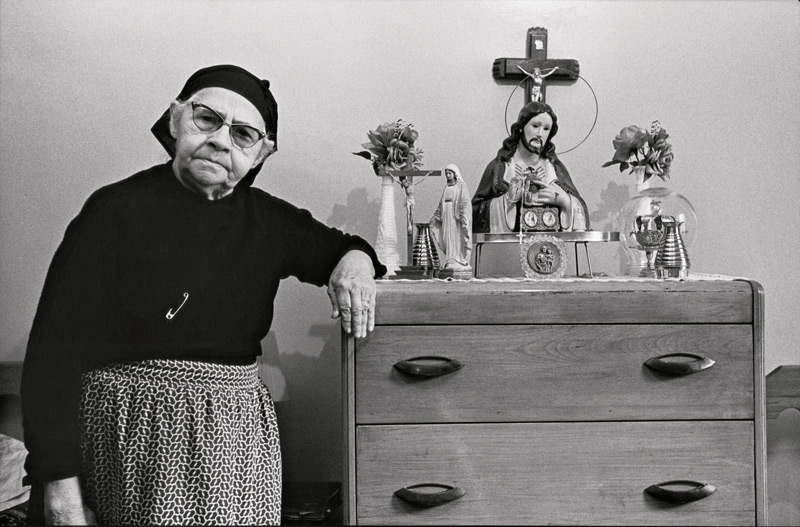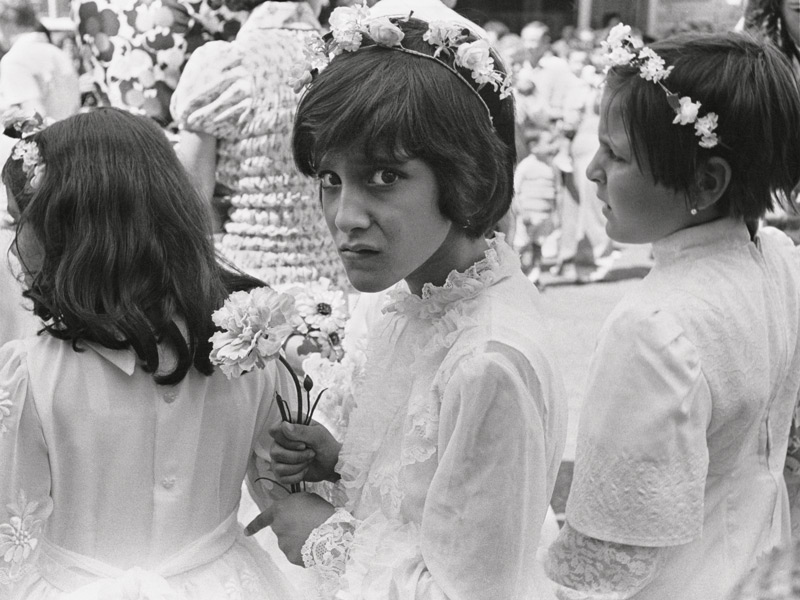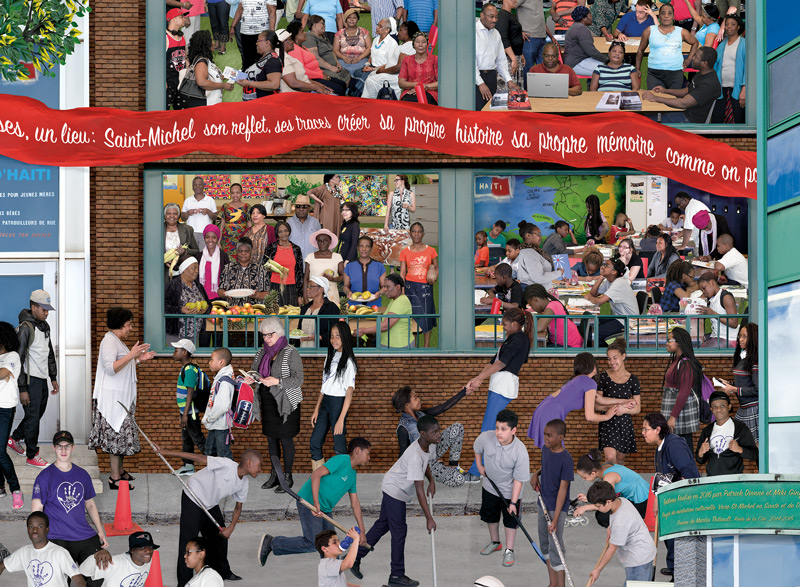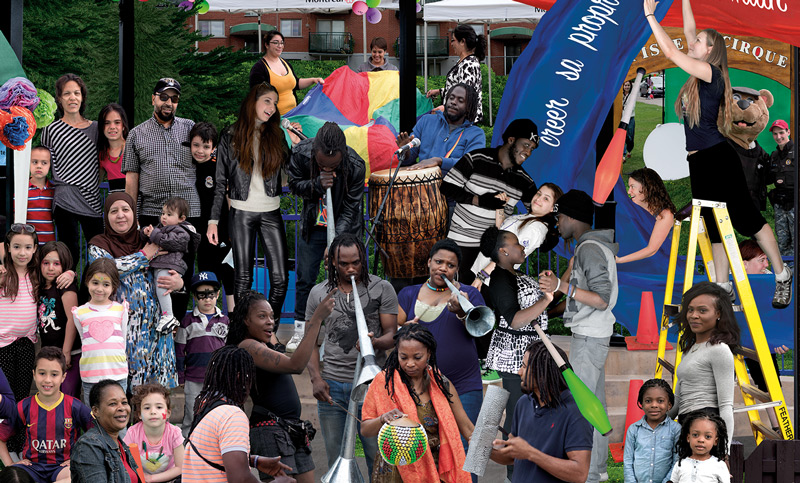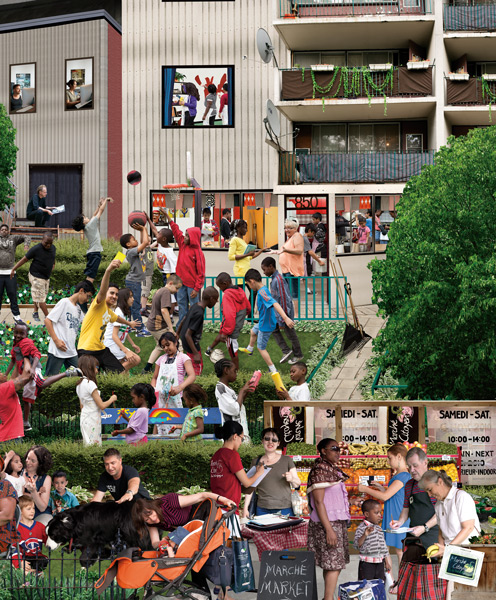Par Pierre Dessureault
Gabor Szilasi
Clara Gutsche and David Miller
Groupe D’Action Photographique
Patrick Dionne and Miki Gingras
Over the years, Montreal has been the subject of a number of major documentary projects. We might think of Gabor Szilasi’s prolific production – in particular, as he recorded development in the city, his photographs of St. Catherine Street (1977–79) in which he immortalized the configuration of the stores along the street by systematically photographing them from the sidewalk in front of them.1 He wanted to identify the complexity and diversity of the street’s architectural components and to record their appearance at a moment in its history, but without ignoring the visual chaos and the numerous ruptures and rough patches that he encountered as he went. The stylistic rigour of his approach served to create an ensemble and unify what might have remained an accumulation of details multiplied by repetition of the motif and the subject.
With a similar concern for preserving the configuration of the urban fabric, Clara Gutsche and David Miller, in The Destruction of Milton Park (1970–73), inscribed their documentary approach within a movement militating for preservation of a neighbourhood.2 In their complementary visions, Gutsche became interested in capturing the human fibre of this multi-ethnic neighbourhood in portraits that situated people in their daily environment, whereas Miller detailed the district’s architecture and unique physical environment. In this spirit of conservation of an urban patrimony that was in the process of transformation – and eventually of disappearance – they also produced a major project on the Lachine Canal (1985–86), in which Miller recorded the architectural forms typical of this industrial district and Gutsche immersed herself in the interiors of these cathedrals of another era. Subsequently, they produced a series of individual projects around similar concerns. In these works that formed a record of a specific era, Gutsche and Miller, like Szilasi, favoured a direct and factual approach, stripped of aesthetic effects, that drew on the main characteristics of classic documentary style: uniform framings, clear compositions, and precisely rendered large formats.
The Groupe d’action photographique (GAP),3 created spontaneously in October 1971 by three young Montreal photographers, Michel Campeau, Serge Laurin, and Roger Charbonneau – joined by Claire Beaugrand-Champagne, Szilasi, and Pierre Gaudard in February 1972 – was aimed, as a collective, at reformulating the bases of social organization by engaging with popular groups: “We wanted, through our images, for Quebecers to stand up and express their living conditions.”4 . Their projects, both as a group and as individuals, focused on neighbourhood life, street festivals and gatherings, and cultural communities in central and southern areas of Montreal. These highly significant manifestations exposed aspects of community life that, up to then, had remained largely unexplored in images. GAP’s approach, although deliberate, highlighted the immediacy of the small camera and was rooted, to a large extent, in familiarity with their subjects, whom they approached one by one, at eye level.
A generation later, in 2009, Patrick Dionne and Miki Gingras undertook a “huge project aiming to raise the issue of the image of different Montreal neighbourhoods.”5 As part of this project, called Identité, they focused on the Montréal-Nord, Notre-Dame-de-Grâce, Côte-des-Neiges, and Centre-Sud districts. Their approach was based on a slow process of social animation aiming to engage neighbourhood residents in making a detailed portrait of their community that they not only would be portrayed in but would also create. At the end of this dialogue, the artists gathered the multiple points of view and in situ portraits to create large, colourful frescoes that “were intended to be poetic, playful allegories, presented in the form of narrative tableaus mixing reality and fiction.”6
Translated by Käthe Roth
2 Pierre Dessureault, “Dialogue: Clara Gutsche – David Miller,” Ciel variable, no. 32 (Autumn 1995)
3 The works of GAP and its members were reproduced in numerous issues of Magazine OVO between 1971 and 1975
4 “Photographie quebecois,” Impressions [Toronto] 5 (August 1973): n.p.
5 (August 1973): n.p. 5 Pierre Rannou, “Patrick Dionne and Miki Gingras: Beyond a Neighbourhood, a Community,” Ciel variable, no. 94 (Spring–Summer 2013): 38.
6 Artists’ website, http://patmiki.blogspot.ca/p/demarche.html (our translation).

